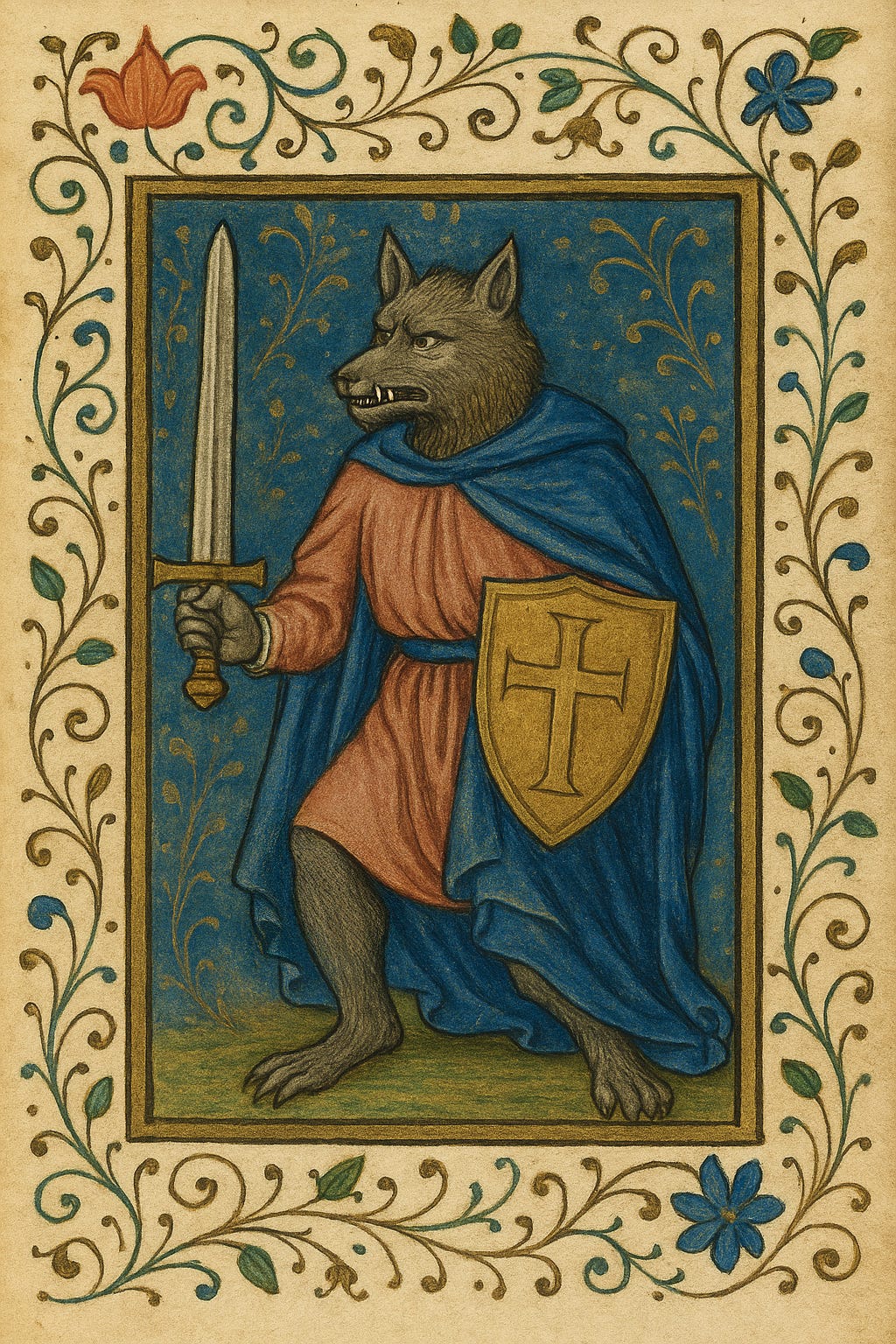📁Folklore File: The Livonian Werewolf
A werewolf fable, with a twist.
In 1692, an elderly man named Thiess of Kaltenbrun stood before a court in the Swedish-controlled region of Livonia, claiming he was a werewolf. But unlike the many European trials that saw men accused of shapeshifting and bloodlust, Thiess did something extraordinary: he volunteered the information. He wasn’t a suspect. He wasn’t under pressure. He wanted the court — and the world — to know that not all werewolves served evil. Some, he said, were soldiers of God.
His words marked a rare and fascinating collision of pagan folklore, Christian theology, and rural mysticism. What followed was a trial not for witchcraft or murder, but for belief itself.
Thiess was a man in his seventies, widely known in his village as a folk healer and cunning man. He used charms, herbal remedies, and protective rituals to heal the sick and safeguard livestock and crops. In rural Livonia, far from the urban centres of church power, men like him often filled the spiritual gap between nature, survival, and faith.
To his neighbours, Thiess wasn’t feared — he was respected. He spoke of spirits, blessings, and curses. And more than once, he had hinted at something deeper: that his powers came from a much older tradition.
When Thiess walked into the courtroom that year, it wasn’t to defend himself. He had come to testify in a theft case. But what he said changed everything.
Thiess had been called to court in Jürgensburg as a witness in a case involving the theft of a church chalice. But in the middle of his testimony, he made an unsolicited statement:
“I am a werewolf. But not the kind you fear. I am one of the good ones.”
The court was stunned. Suddenly, the theft case dissolved into the background. All attention turned to Thiess, who began to explain what he truly meant.
According to Thiess, he and other werewolves — both living and dead — would undergo spiritual transformation on certain holy nights of the year, such as St. Lucia’s Eve, Pentecost, and St. John’s Day. In wolf form, their spirits would descend into Hell, where they fought witches and the Devil to reclaim blessings stolen from the Earth: grain, livestock, and fertility.
“We are the Hounds of God,” he told the court.
“Without us, the Devil would destroy the harvests.”
He said he had performed this sacred duty for many years. He even claimed that his broken nose had been the result of a battle with a witch during one such descent.
This wasn’t a confession of guilt. It was a declaration of purpose. Thiess believed that he and his fellow werewolves were doing holy work — even if the church didn’t see it that way.
Among the local peasantry, Thiess’s story wasn’t strange — it was familiar. Baltic and Slavic folklore had long included tales of “good werewolves,” spirit-warriors who fought to protect the land. Similar legends were found in Italy, where the benandanti (the “good walkers”) claimed to battle witches to defend the harvest. To his neighbours, Thiess was perhaps eccentric, but not dangerous. He was fighting the Devil on their behalf.
But the Lutheran court saw something else entirely. They were unnerved by:
His open embrace of a supernatural identity.
His use of charms and rituals unapproved by the church.
His refusal to frame his acts in Christian terms — he never once invoked Christ in his stories of spiritual warfare.
To them, Thiess was not a werewolf, but a heretic.
The court interrogated him repeatedly. They demanded to know where he had learned these things, who had taught him, and why he insisted on bypassing church authority. Thiess held firm. His knowledge, he said, came from generations before him, passed down like any tradition of wisdom.
He would not renounce his belief. He would not say he served the Devil — only that he fought him.
The court, finding no grounds to execute him, sentenced Thiess to flogging and exile. The sentence wasn’t for lycanthropy, but for spreading false doctrine and superstitious belief.
So what was Thiess really?
A Folk Shaman? Thiess may have been the last living voice of an ancient pre-Christian tradition. His story aligns with animist and shamanic practices: spiritual journeys, crop rituals, battles between good and evil forces. His werewolf identity could be symbolic — the wolf as protector, not predator.
A Believer in His Own Myth? Unlike others tortured into confessions, Thiess offered his testimony voluntarily, and with conviction. He wasn’t mad — he was convinced. In his mind, he really was fighting evil on spiritual battlefields.
A Threat to Religious Order? To the church, Thiess represented a lingering folk worldview that refused to die. He undermined the power of scripture and clergy by claiming direct spiritual authority through oral tradition and trance-like visions.
In the end, he was punished not for what he did, but for what he believed — and for what he refused to deny.



